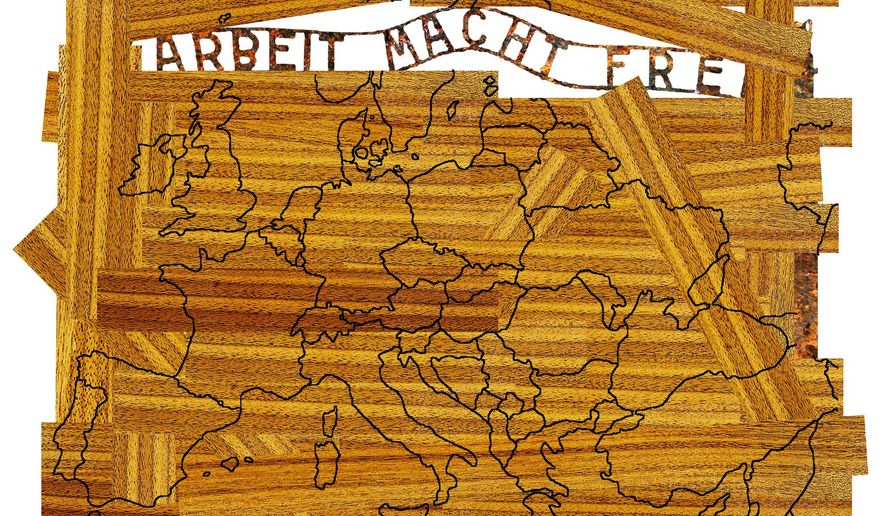OPINION:
BERLIN | The American response to the history of the Holocaust is changing. So, too, the response of the Germans. “History teaches, but has no pupils,” Antonio Gramsci, a Marxist philosopher, once said. But he was wrong.
Pupils abound, but they often do not limit their curiosity to what their teachers teach them. The history of the Holocaust is a kaleidoscope of fact and opinion dispensed among different generations, and rigorous discussion and debate is always a strong disinfectant to apply to both misinformation and disinformation. Updates are required.
In our own time of hyperpartisan anger and resentment, when everyone seems to be mad at somebody, there’s a resurgence of anger at the Jews in Europe. Physical assaults on Jews average twice a week in France, Jews in Germany worry about open anti-Semitism among migrants and refugees from Syria and Iraq, a new libel law in Poland prohibits attribution or responsibility to Polish complicity in the Holocaust, synagogues in Sweden were targeted for vandalism after the United States relocated its Israeli embassy to Jerusalem, and English Jews demonstrated in London against anti-Semitism in the British Labor Party.
Against this backdrop of unrest there’s a new examination of President Franklin D. Roosevelt’s reaction to the persecution of European Jews in the years leading to World War II. He argued that the allies had to focus totally on war strategy before rescuing Jews. The history of that time taught that Americans weren’t aware of the dimensions of the destruction of the Jews until after the war was over. That’s not true, either.
A new exhibit at the U.S. Holocaust Memorial Museum in Washington shows just how much Americans, including President Roosevelt, knew about what was happening to European Jews, when it was happening, and argues by implication that more could been done to save Jewish lives. Nazi atrocities were, in fact, widely reported during the 1930s, and immigration of Jews was, in fact, suppressed when legal immigration could have let in many more. The New York Times, though owned by Jews, particularly suppressed coverage of what was happening.
The Immigration Act of 1924 allowed a maximum of 25,957 visas from Germany annually, and only 1,241 were issued in 1933, when many Jews were trying to flee. By 1939, on the eve of war, many Jews had been waiting for 11 years.
President Roosevelt called an international conference in France in July 1938 to find countries to take in Jewish refugees, but this might have been intended to deflect attention from the unfilled American quotas. The conference produced nothing of substance, except exposure of American hypocrisy. Alex Ross, writing in New Yorker magazine, recalls that the German Foreign Office, “found it ’astounding’ that other countries could decry Germany’s treatment of Jews and then decline to admit them.” The Germans were brazen in their bigotry, but the failure of so many so-called “sympathetic” countries to accept Jews was fairly brazen, too.
In 1939, legislation to admit 20,000 Jewish children to the United States never made it through Congress. Fear of spies, Communists and economic insecurity abetted by isolationist attitudes was part of it, but anti-Semitism rooted in public and private attitudes diminished incentives for saving Jewish lives. Breckinridge Long, an assistant secretary of State, routinely denied visas to Jews and testified falsely to Congress to prevent rescue of European Jews. Fake news was deadly then, too.
The Jewish Voice From Germany, a quarterly newspaper published in English in Berlin, asks whether, when there are no witnesses left to tell their harrowing tales, “Will it be purely consigned to history or will the Shoah play a crucial role in future society?” It’s not an academic question.
New attention focuses on a site in an affluent suburb southwest of Berlin, where Reinhard Heydrich, director of the Security Police and the Security Service of the SS, one of the most notorious Nazi leaders, invited 15 high-level officials to a conference at a villa in Wannsee in January 1942, where state agencies worked out how to insure the deportation and mass killings of Jews in Nazi-occupied countries. Moral hideousness hid behind bureaucratic correctness in the killing protocols assigned to specific government agencies.
How these perpetrators were protected by their bureaucratic cover is described in “Survivors, Victims, Perpetrators,” a book published by Wannsee House to accompany a traveling exhibition, which discusses the chilling details of the division of labor and responsibility. The dehumanizing directives of the “final solution” are interspersed with dramatic portraits of aging survivors by photographer Luigi Toscano, giving brutality a human face. The photographer, who exhibited his photographs on the National Mall in Washington, calls his project, “Lest We Forget.”
When history’s pupils continue to ask the right questions, and not flinch from the pain of the answers, memories might even improve with age. For the sake of rising generations, we must all pray so.
• Suzanne Fields is a columnist for The Washington Times and is nationally syndicated.




Please read our comment policy before commenting.